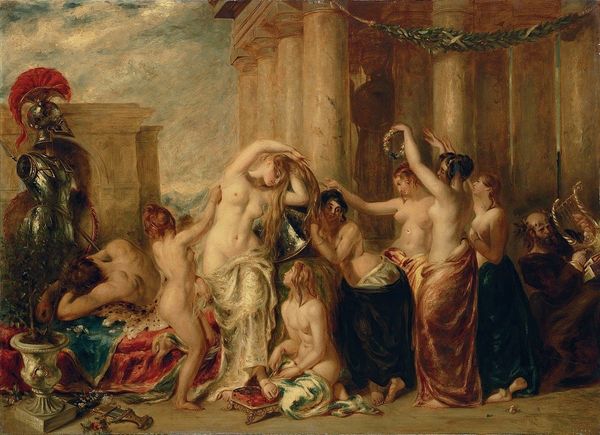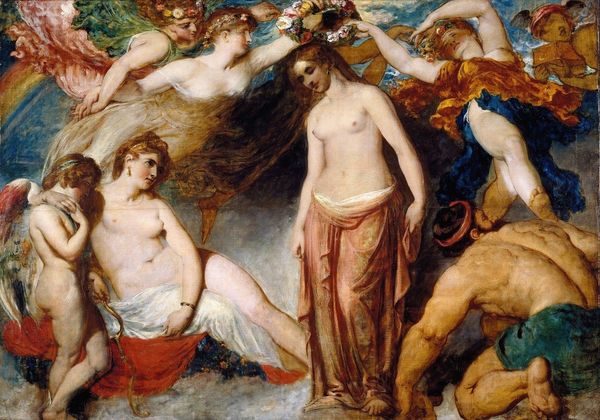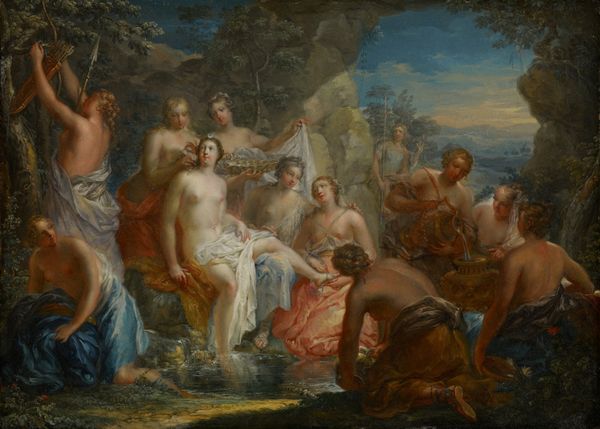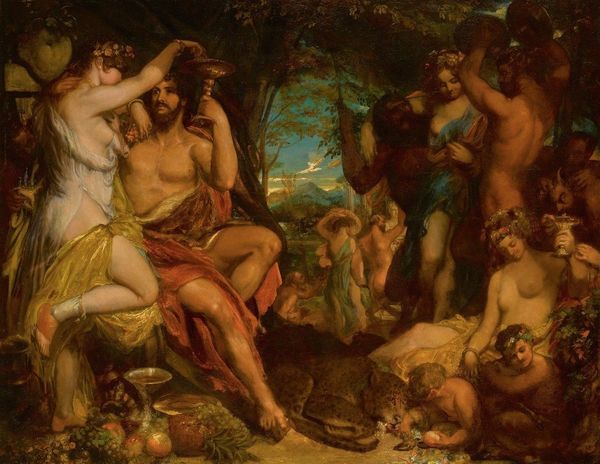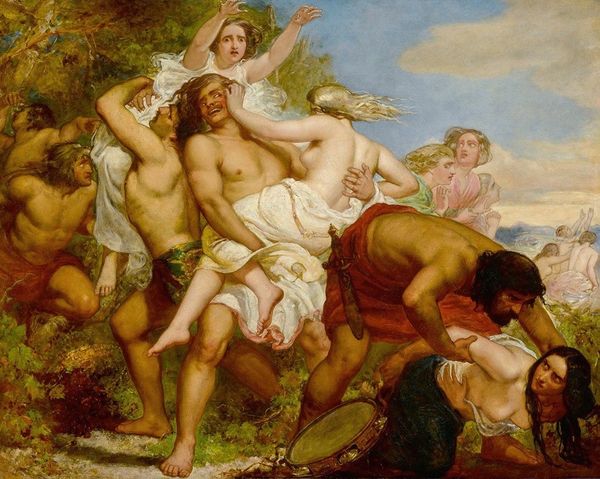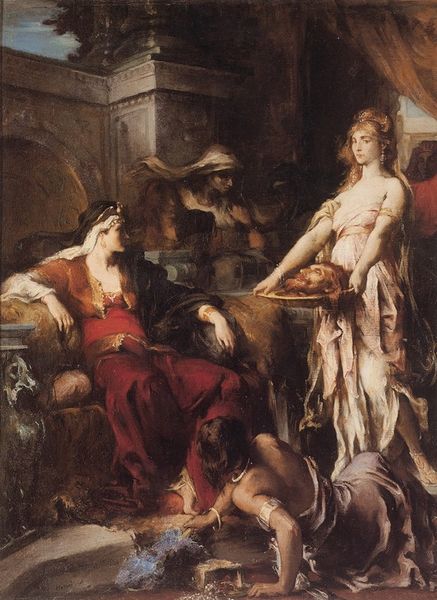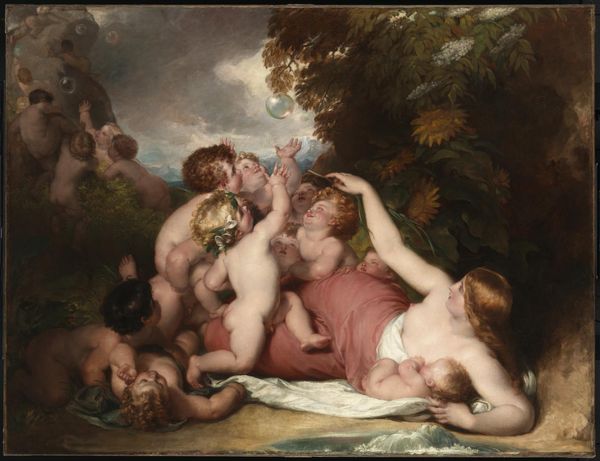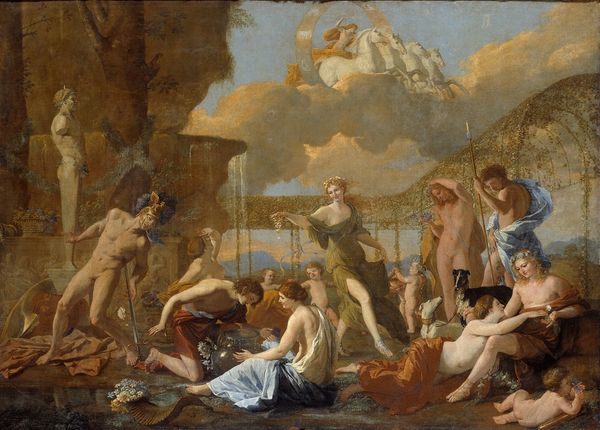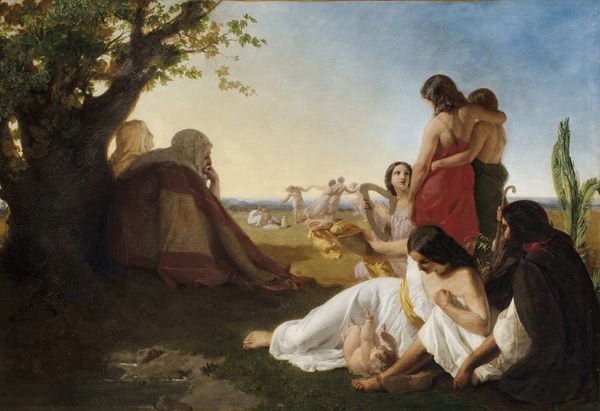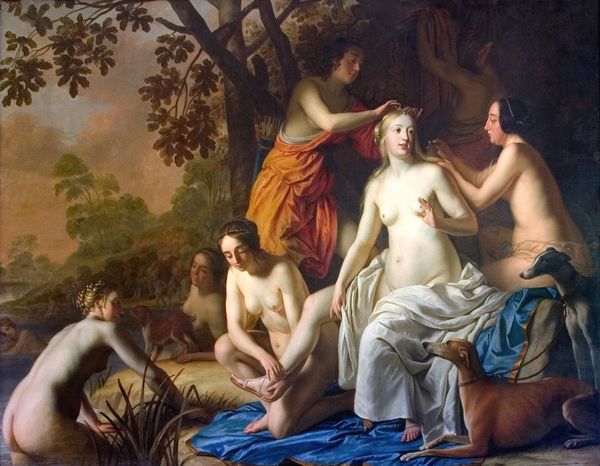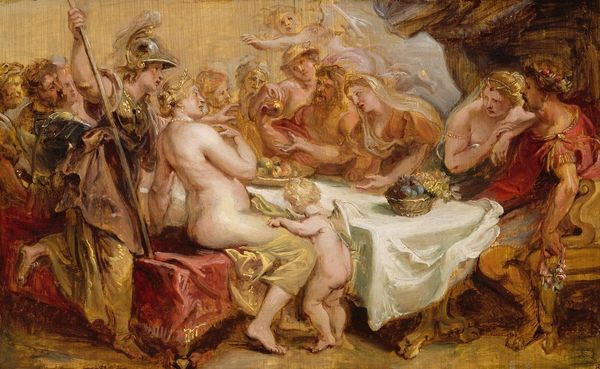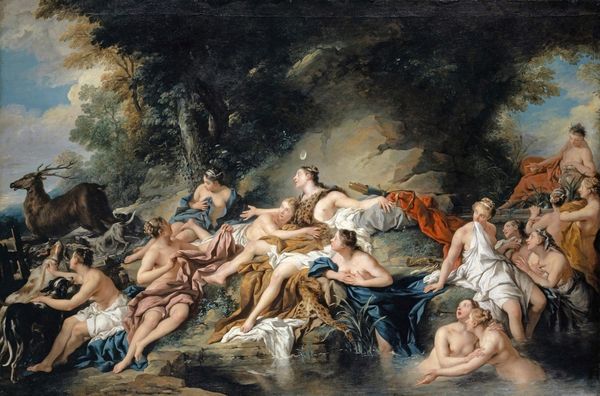
painting, oil-paint
#
portrait
#
narrative-art
#
painting
#
oil-paint
#
figuration
#
oil painting
#
romanticism
#
history-painting
#
academic-art
#
portrait art
Copyright: Public Domain: Artvee
Editor: So this painting is entitled *The Captivity of the Jews in Babylon* by Léon François Comerre. It’s oil on canvas, and the figures seem so burdened with grief. What stands out to you? Curator: What I find compelling is the artist’s engagement with a historical narrative to explore contemporary anxieties. Comerre paints a scene from the Babylonian exile, but he's doing so in a rapidly changing Europe, with rising nationalism and anxieties about displacement and identity. What are the Jews doing in Babylon? What socio-political message is delivered? Editor: I hadn't considered it like that! So, it's not just a depiction of a past event, but a commentary on societal concerns? Curator: Exactly. Consider the Salon culture in which Comerre exhibited. These weren't just displays of artistic skill; they were public forums for debating societal values. History painting like this played a crucial role in shaping public opinion. What are we supposed to think about power and marginalization? Editor: The melancholic figures… it’s like a staged tableau. Curator: Think about the relationship between art and empire at that time. Representations of captive peoples were prevalent, reinforcing dominant narratives. By depicting the Jews in Babylon, is Comerre simply reiterating this power dynamic, or is he inviting empathy, perhaps even a critique? What are the instruments on the lower right a signal of? Editor: That’s something to ponder – a statement or social critique. I never thought about art's active role in society. Thanks! Curator: Precisely. Thinking about the socio-political role transforms how we view these historical artworks!
Comments
No comments
Be the first to comment and join the conversation on the ultimate creative platform.

